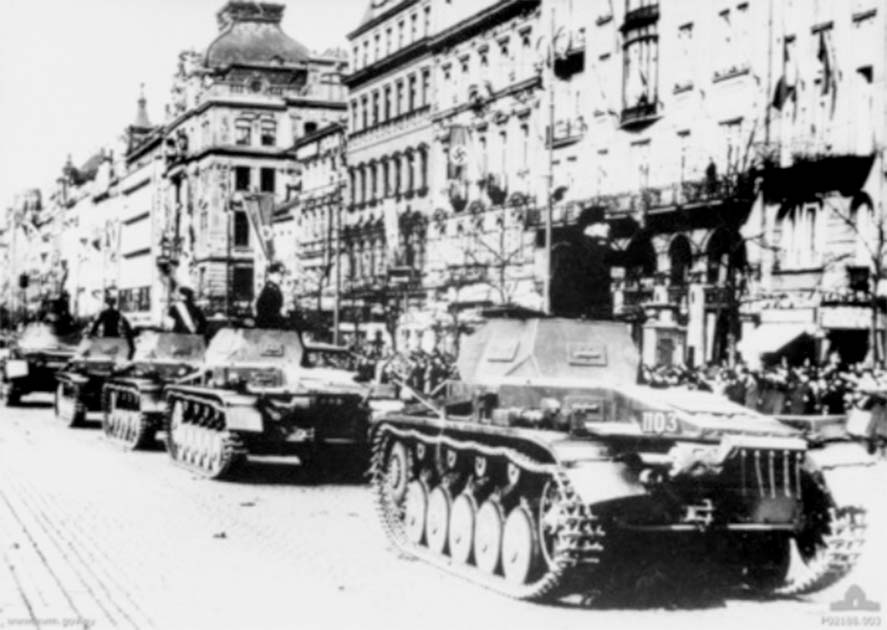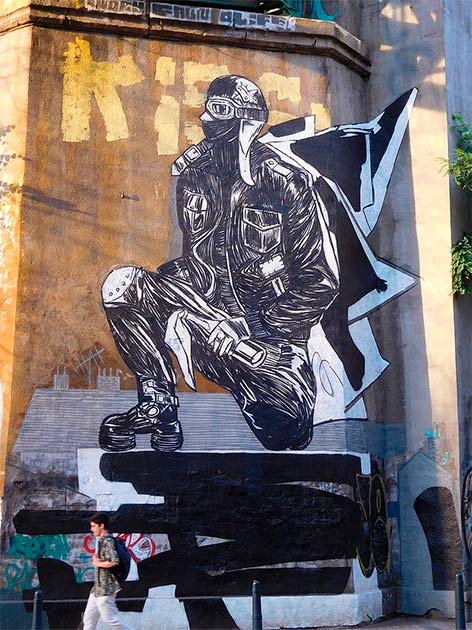Late Victorian London was a strange and an unsettling place. There were figures stalking the streets and night, murderous and menacing, and perhaps the strangest of all was Springheeled Jack.
This odd gothic phantom, who would leap from the shadows to accost strangers before performing a superhuman jump to escape, was never satisfactorily explained. But London wasn’t the only city to experience such a creature.
Perak, the spring man is an urban legend that originated in Czechoslovakia from the city of Prague. It arose during the German occupation of Prague in the middle of World War II.
Following this popularity, Perak has been portrayed as a superhero similar to that of Captain America but based in the Czech Republic. This is the story of Perak.
A Legend Come to Life
Historians Jan Kaplan and Callum McDonald have written extensively on this subject. According to their book Prague in the Shadow of the Swastika: A History of the German Occupation 1939-1945 the Springer or Perak was supposed to leap out from the alleys, from the shadows and to startle the passers-by.
Many stories began to be circulated at this time that the leaps from Perak were extraordinary. They were massive in magnitude and he was able to jump over train carriages. This was very similar to England’s very own Springheeled Jack.

A contemporary record and another associated rumor surrounding the case claimed that there was a man who would hide in the shadows and slash at his victims with razor blades. He became known as the “Razor Blade Man”.
Mike Dash, a respected researcher quoted a noted authority, George Zenaty, who claimed that in the policing in Prague during the years of 1940 and 1942, there were no reports of a Spring Man. However, this does not mean that the rumors were not circulated among the regular people. Unless someone recorded them, however, they would be impossible to validate.
In modern times there have been attempts to create interest and excitement around the legend of Perak. In 2015, a social activist claimed the identity of Perak to front a Guerrilla Media campaign. It was used to commemorate the site of the Lety concentration camps.
In 2017, the book Mýtus o pérákovi. Městská legenda mezi folklorem a populární kulturou which was written by the Czech Journalist Petr Janecek offered a survey on the Perak phenomenon and traced the history of the figure to Springheeled Jack from England. The legend it seems thrived there before transitioning into Czech folklore in the 19th century. It became popular after World War II and then featured heavily in popular culture through novels, comic books, and other works of fiction.
Reinvention and Fame
There have been some iterations of the Perak legend in film. In 1946, there was a 14-minute Czech Cartoon created called Springman and the SS which was also released to the English-speaking world as The Chimney Sweep. It was created by the well-known Czech animator Jiri Trnka in collaboration with Jiri Brdecka.
Perak is portrayed as a mischievous and heroic black-clad chimney sweep who wears a mask made out of a sock. Perak was able to perform huge fantastical leaps because he placed couch springs on his shoes. Perak’s main pastime was to taunt the German Army sentries, the Gestapo, and a Nazi collaborator that bore a passing resemblance to Hitler. It ended with Perak surreally and comically escaping whilst being chased and freeing many citizens of Prague.
This imagining of Perak as a superhero who defied the authority of the Germans was the basis for the revivals of Perak that were to follow. In 2013, was a film released called Perak, which was based on the noir/mystery genre.
In 2016, Marek Berger created another animation named Perak: The Shadow over Prague, which won 2 awards at the International Student Film Festival in Opava for the best animated film and best film.
But other legends of Perak sprung up alongside these versions. In 1948, he was featured in a newspaper propaganda comic called Halo Novena. Its artwork was based on the 1946 animated film and a total of 15 pages were published.
In 1961, Perak was featured as the heroic character in the story of the Spring Man, written by Jan Weiss. It was written as part of a collection of small stories called A two-headed Lady. It has since been speculated that these stories were in response to Nazi Propaganda.
In 1986, a Czech science fiction writer called Ondrej Neff portrayed Perak as an honorable and heroic figure. Later in 2001, he also created a satirical and humorous comic strip called Perak versus Global Man.
The comic combined the stories and legends surrounding both the Spring Heeled Man and Razor Blade Man against a made-up supervillain that bore a strong resemblance to the McDonald clown mascot Ronald McDonald. Perak had again evolved, and now carried an anti-consumerist message.
In 2002, the scriptwriters Monge and Morten alongside cartoonist Adolf Lachlan hoped to create an entire series of comic strips about Perak. However, only the introductory chapter came out. Petr Janecek has dedicated scientific research to Perak and collected many of the stories around Perak. He published these in 2017.
Other Versions
There have even been theatre productions of Perak. In 2011, the Vosto5 Theatre in Prague presented the historical action called Perak.
The plot placed the historical context of the period in World War II. It opened with the Reich Protector Reinhard Heydrich to Prague and followed through his journey until his assassination. The show used a combination of martial arts and extreme sports alongside theatrical poetry and verbal humor to present the picture of Perak and occupied Prague.

In more recent times, there has been a platform video game created based on the legend of Perak. It was released in August 2023 and was to be played on Microsoft Windows. The story follows Perak using his spring heels to escape from various places through Prague such as the Old Synagogue, the Jewish Cemetery, and Faust’s house.
The legend of Perak has played an important role in the relationship between Prague and its history of occupation. It has a strong connection with English folklore and is a prime example of how folklore and stories can create a sense of hope and opposition against tyrannical powers.
But it would seem that the character has become more than this. In growing beyond his origins to become a symbol of defiance against oppression, Perak has come to represent the spirit of the city. He has become an idea.
Top Image: Mural of Perak in Prague. Source: JiriMatejicek / CC BY-SA 4.0.
By Kurt Readman